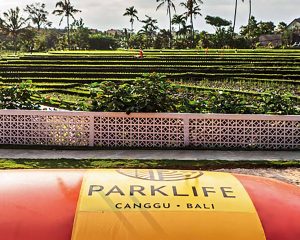The Istiqlal Mosque (Masjid Istiqlal) in Jakarta is Indonesia’s national mosque and the largest in Southeast Asia, both in structure and capacity. It stands as a powerful symbol of the country’s independence, religious tolerance, and architectural ambition. The idea for a national mosque was conceived shortly after Indonesia’s independence in 1945. The project was initiated by Wahid Hasyim, Indonesia’s first Minister of Religious Affairs, and Anwar Cokroaminoto, who later became the chairman of the Masjid Istiqlal Foundation. A design competition was held, and the winning architect was Friedrich Silaban, a Christian of Batak descent. President Sukarno, Indonesia’s first president, laid the foundation stone on August 24, 1961. After 17 years of construction, the mosque was officially opened to the public on February 22, 1978 .
Strategically located in Central Jakarta, the mosque is adjacent to Merdeka Square and directly across from the Jakarta Cathedral. This proximity was intentionally chosen by President Sukarno to symbolize Indonesia’s commitment to religious harmony and tolerance.
-
Location: Jalan Taman Wijaya Kusuma, Central Jakarta, Indonesia.
-
Accessibility: Easily accessible via public transportation, including the nearby Gambir and Juanda train stations.
-
Visitor Guidelines: Open to visitors of all faiths. Modest dress is required, and guided tours are available to provide insights into the mosque’s history and architecture






